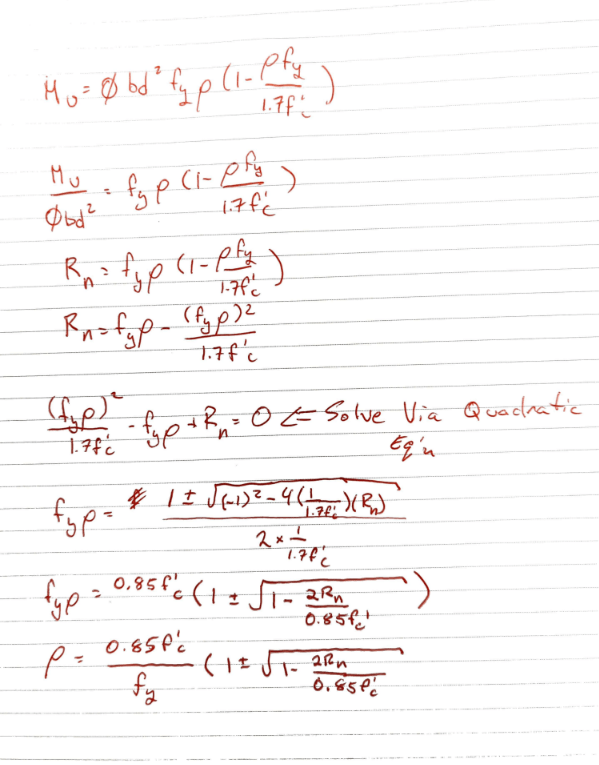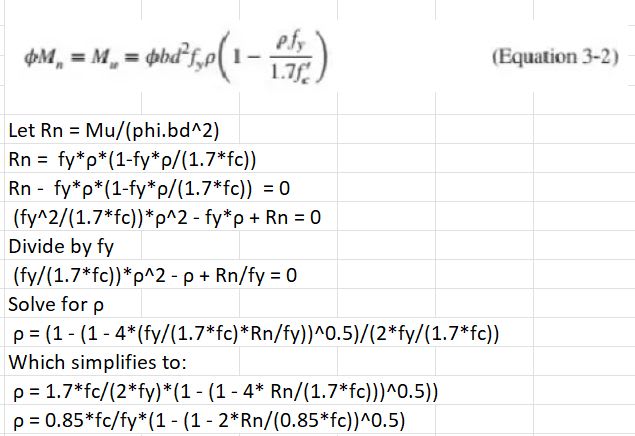Hello, I am having a little trouble deriving the percentage of steel reinforcement for a beam using rho and Rn (Flexural Resistance Factor). The results are given in Design of Reinforced Concrete by McCormac & Brown - Equation (3-3), attached for reference. I however have not been able to make the correlation. Does anyone have a reference illustrating the steps to get here? I believe the Whitney Stress block --> a = (As/ 0.85 f'c)*(As/b*d)* d can be helpful but I cannot find the result.
Similarly are the any other helpful "cheat sheets" / sources showing derivations of useful concrete equations like this? Thank you in advance.
Similarly are the any other helpful "cheat sheets" / sources showing derivations of useful concrete equations like this? Thank you in advance.


